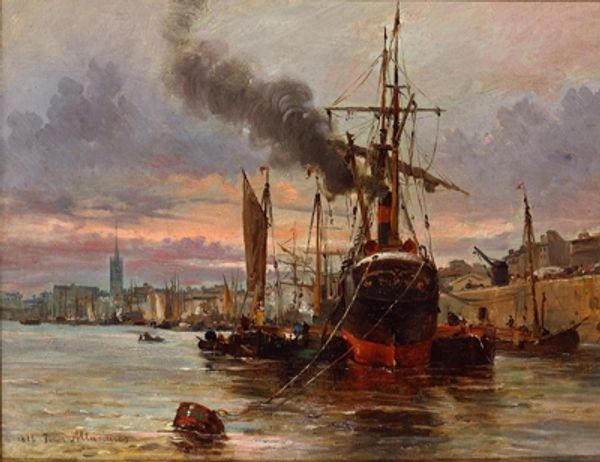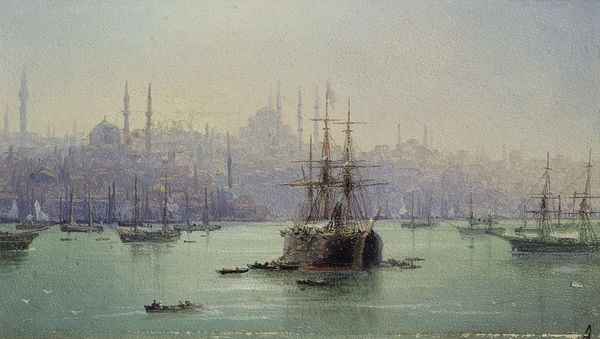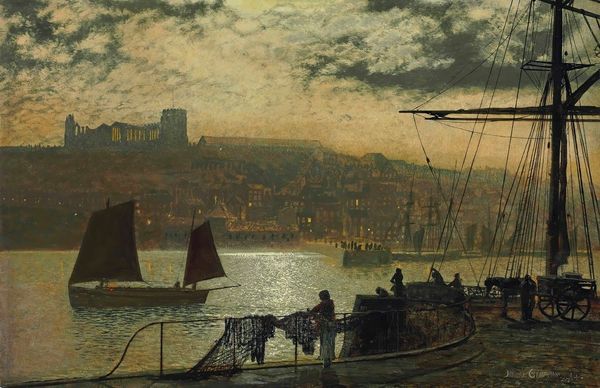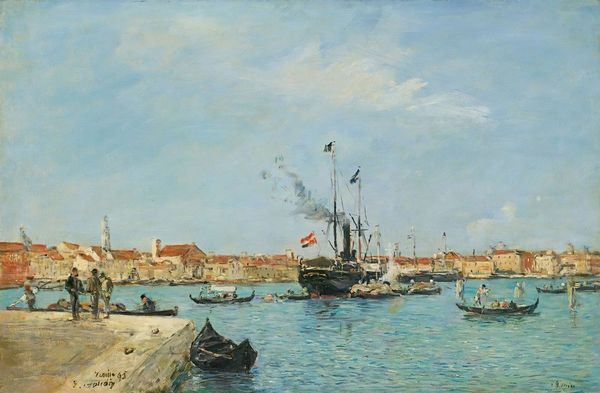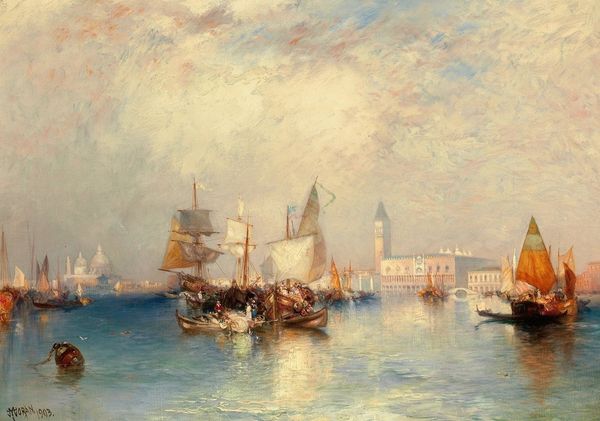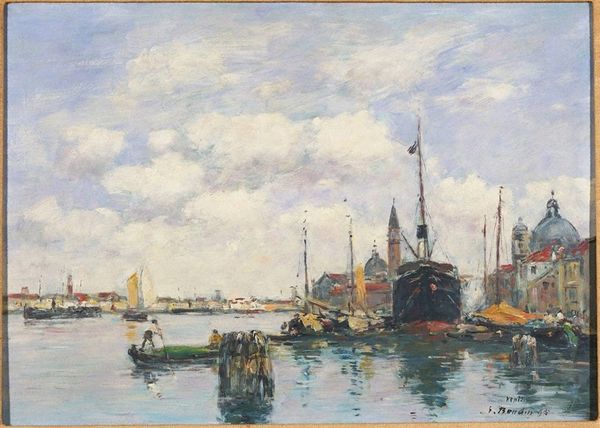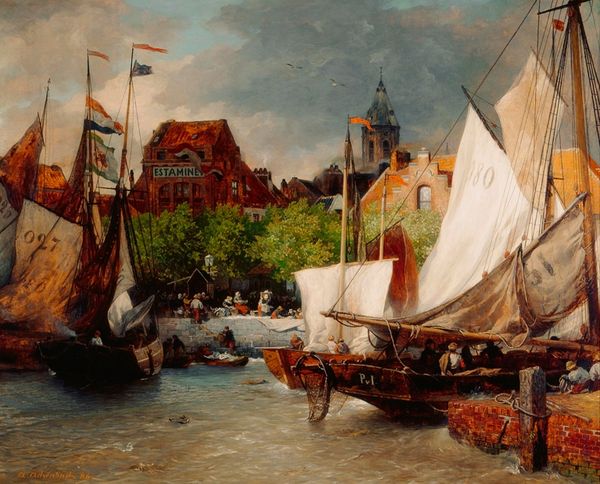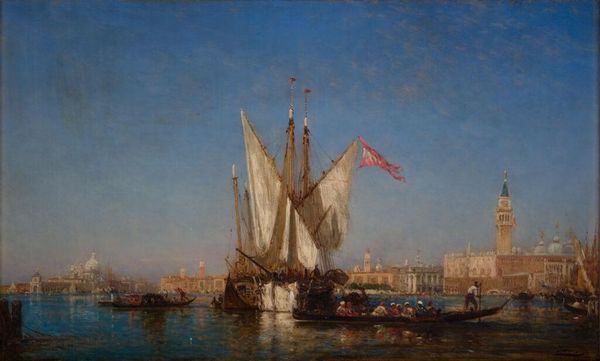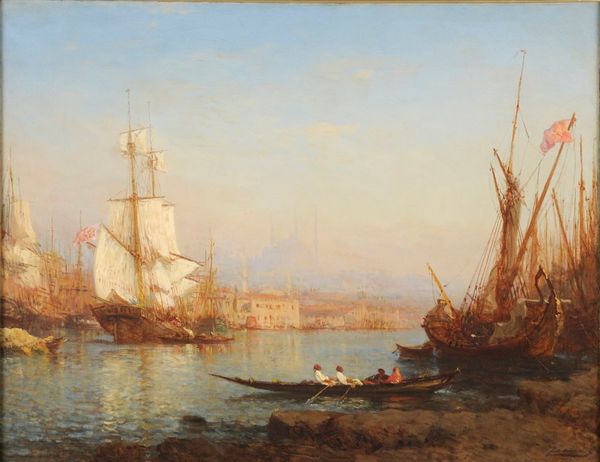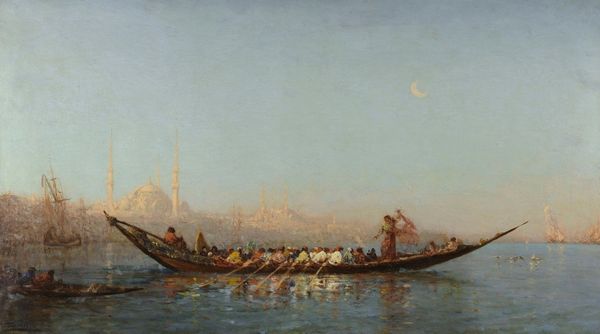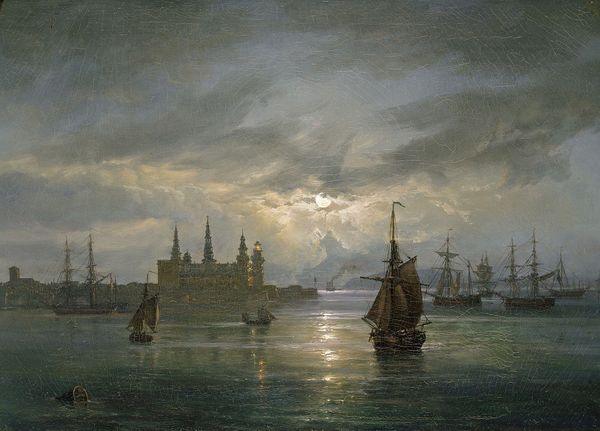
Copyright: Public domain US
Editor: This painting, "Constantinople," created by Thalia Flora-Karavia in 1905 using oil paint, feels like a snapshot of bustling port life. All the boats, the city in the background… How do you interpret this work, particularly considering the artist’s choice of materials and technique? Curator: I'm particularly drawn to the interplay between labor and leisure represented here. Observe the application of the oil paint; Flora-Karavia's brushstrokes seem hurried, almost mirroring the energetic activity of a working port. But look closer, and the boats transform from carriers of commerce into floating stages showcasing a different kind of labor: that of the artist capturing this vista. Does this dynamic alter your initial understanding? Editor: It does. I was thinking mainly about the location and the Impressionist style, but seeing it as a reflection of the artist’s own labor adds another layer. The paint itself becomes a key part of the story. Curator: Exactly. Furthermore, let’s consider the consumption of such a scene. Who would purchase and display this depiction of Constantinople? Was it for someone engaging in trade with the Ottoman Empire, perhaps? Or was it appealing to those who may be intrigued by the "Orient"? Flora-Karavia provides us a lens to examine the social networks entangled with her craft. Editor: That's fascinating. I hadn't considered the artwork itself as a commodity connecting people and cultures like that. Thank you. Curator: Of course. Looking at the labor of making and the object itself provides so much to learn!
Comments
No comments
Be the first to comment and join the conversation on the ultimate creative platform.
